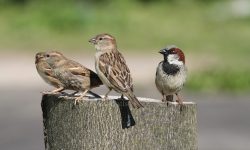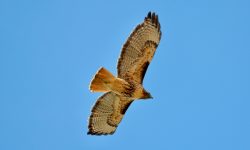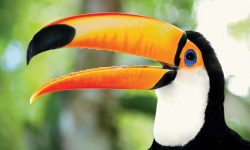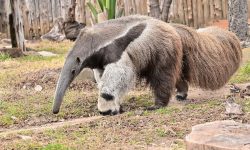Introduction: Dancing in the Sagebrush Sea
As the sun rises over the vast sagebrush steppes of Idaho, a strange sound carries on the wind—a deep, echoing “pop” followed by the flutter of wings. It’s the sound of the Greater Sage-Grouse (Centrocercus urophasianus), one of the most iconic and charismatic birds of the American West.
No other bird performs a courtship display quite like this. With inflatable chest sacs, tail fans spread wide, and rhythmic, bubbling calls, the sage grouse transforms the open plain into a booming dance floor each spring. It isn’t just the spectacle that sets them apart—it’s their complete dependence on sagebrush, and their role as an ecological barometer for the health of the western grasslands.
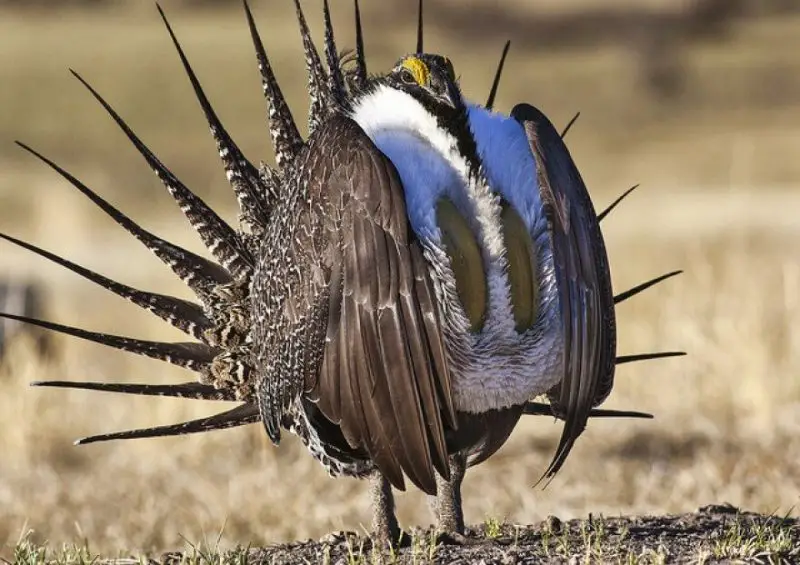
Identification: Built for the Stage—and for Disappearing
Among North America’s upland birds, the Greater Sage-Grouse stands out—both for its impressive size and for the dramatic contrast between its subtle camouflage and flamboyant mating display. Males can grow up to 30 inches long and weigh nearly 7 pounds, making them the largest grouse species on the continent. Their bodies are thickset, with feathered legs that insulate against cold desert nights and long, pointed tail feathers that add to their distinctive silhouette.
Their plumage is not built for beauty—but for invisibility. A complex pattern of browns, grays, and blacks helps them melt into the sagebrush backdrop. This cryptic coloration is so effective that even a large male can vanish into the landscape, unseen until it moves.
But when spring arrives, these masters of camouflage undergo a transformation that sets them apart from any other bird of the West. At dawn, males gather on leks—open areas within the sagebrush—and perform one of the most elaborate courtship displays in the avian world. They inflate a pair of bright yellow air sacs from their chests, creating a strange, rhythmic series of popping and swishing sounds. Simultaneously, they fan their stiff tail feathers into a spiky wheel, stretch their white breast feathers into a bold, puffy shield, and strut with exaggerated, deliberate movements.
This display is not only visual—it’s acoustic, physical, and ritualistic. It can last for hours each morning across weeks of the breeding season. No other North American bird combines such a large physical presence with such a complex, multisensory mating ritual. In fact, their booming calls can carry across the sagebrush for over a mile.
Females are more modest in appearance. Smaller and lighter, they wear earth-toned plumage—a blend of soft browns and grays—that provides near-perfect camouflage. For a bird that nests on the ground with no protective cavity or cover, this blending with the habitat is critical for avoiding predators. Their role in the breeding process is quiet but decisive: they observe the males from the lek’s edge, carefully selecting the most vigorous and precisely performing suitor.
The stark difference between the sexes—one built to vanish, the other to perform—makes the Greater Sage-Grouse a remarkable study in evolutionary contrast. Everything about them, from feather structure to behavior, is shaped by two pressures: survival in an exposed landscape, and the high-stakes spectacle of sexual selection.
Range and Habitat: The Sagebrush Sea
Idaho holds one of the country’s most important populations of Greater Sage-Grouse. Found primarily in southern and central regions such as the Snake River Plain and Owyhee Uplands, these birds are deeply tied to the state’s sprawling sagebrush ecosystems.
Unlike other birds that move with the seasons or tolerate fragmented landscapes, sage grouse are sagebrush specialists. They rely on this plant year-round—for food, shelter, and nesting cover. Their survival depends not just on sagebrush itself, but on vast, unbroken expanses of it.
Life Cycle and Behavior
Each spring, males return to traditional leks—open spaces in the sage where they strut and boom to attract mates. The males do not help with nesting or raising chicks. Females select a mate based on the performance, then fly off to nest alone under dense sagebrush.
She lays 6 to 10 eggs in a shallow scrape and incubates them for nearly a month. Chicks hatch fully mobile but vulnerable, relying on a protein-rich diet of insects and forbs in their first weeks. Unlike many birds, sage grouse chicks cannot survive on seeds alone. In summer, hens guide their broods through wet meadows and sage clearings in search of nutritious green growth.
What makes sage grouse behavior so different is the strict fidelity to habitat and lekking sites. They may return year after year to the same display grounds and nesting areas, making them especially sensitive to landscape disturbance.
Diet and Foraging
Greater Sage-Grouse have one of the most specialized diets among western birds. Adults feed almost exclusively on sagebrush leaves in winter. Their digestive systems and gut flora are uniquely adapted to handle the bitter, resinous compounds in the plant—substances toxic to many other animals.
In spring and summer, they broaden their diet to include tender forbs and insects, especially important for growing chicks. But they never truly leave sagebrush behind. No other North American bird is so completely tied to a single plant genus for survival.
Conservation Status and Threats
The Greater Sage-Grouse is considered a near-threatened species, with populations having declined sharply over the last century. In Idaho, they remain relatively strong, but their future depends on how we manage the sagebrush steppe.
Unlike generalist species that can adapt to patchy or disturbed landscapes, sage grouse cannot survive in fragmented habitat. They need large, continuous tracts of sagebrush—something increasingly rare due to agriculture, invasive cheatgrass, wildfire, and energy development.
Because of this dependence, sage grouse are often used as an indicator species. If their numbers are dropping, it’s a signal that the entire ecosystem is in trouble.
Efforts in Idaho include sagebrush reseeding, strategic grazing plans, wildfire prevention, and protecting key lek sites. Collaborative conservation initiatives are key to ensuring the species’ survival.
Why the Sage Grouse Stands Apart
Unlike other western birds, the Greater Sage-Grouse is inseparable from its habitat. It doesn’t adapt easily. It doesn’t move far. And it doesn’t survive without sagebrush. Its entire life—from winter feeding to spring dancing—is built around a single, increasingly threatened landscape.
This makes the sage grouse not just unique but deeply symbolic. It represents the wild West in its most original form—wide, open, and alive with ancient rhythms. Protecting the sage grouse is not only about saving a bird, but about safeguarding an entire way of life rooted in the American landscape.
Conclusion: A Dance Worth Saving
The Greater Sage-Grouse is more than a bird of open plains; it is a living thread woven into the fabric of the sagebrush sea. Its spectacular courtship rituals, its unwavering loyalty to a single habitat, and its role as a guardian species for the American West all make it irreplaceable.
By protecting sage grouse, we protect an ecosystem found nowhere else on Earth. We preserve the soft rustle of sage in the wind, the wide, quiet places where wildness still thrives, and the enduring spectacle of one of North America’s most extraordinary birds.
In saving the sage grouse, we are choosing to save something far greater: the living soul of the West.


